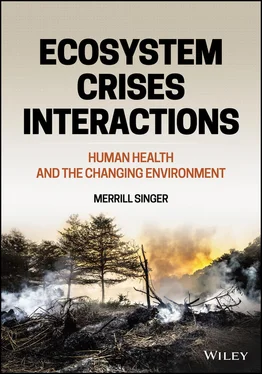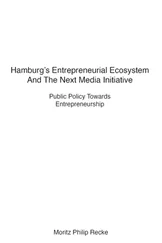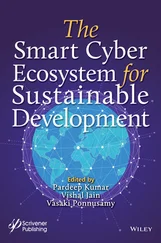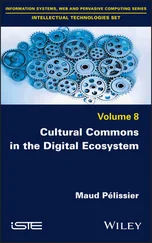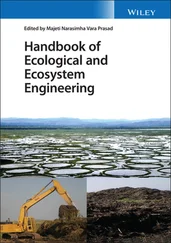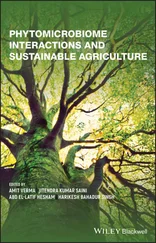These two examples, of course, are simplified illustrations intended to show some of the interconnections and synergies that make up an ecosystem. They are useful because, in the case of black bears, the arrival of European colonialists in North America led to a drastic drop in their numbers and range. Habitat loss (e.g., deforestation) and extensive hunting and persecution resulted in local extinctions and the disappearance of bears across significant sectors of their traditional range by the early 1900s. Subsequently, organized recolonization by conservation officers using bears from growing neighboring populations has been successful in many areas. The lessons of this example suggest the potential for species loss and habitat destruction, as well as the possibility of ecosystem restoration. Restoration of damaged peatlands is a more daunting challenge because of the time it requires: peat only forms at the rate of about 0.04 inches per year, so a 30‐foot‐deep peat bed takes 9000 years to form (Chalker‐Scott 2014). While degraded peatland ecosystems have been restored using sphagnum moss and mulch, CO 2continues to be released for a number of years through bacterial respiration during decomposition of the new organic matter.
2.3.1.2 Conceptualizing ecosystems
As an analytic concept, “ecosystem” was first used by the outspoken British botanist (and strong advocate of Freudian psychology) Arthur Tansley in 1935 (New Phytologist Foundation n.d.). Tansley, known as the father of British ecology, was the first president of the British Ecological Society and served as the initial editor of its Journal of Ecology . He developed the concept of the ecosystem to draw attention to traceable transfers and flows of energy (e.g., from the sun) and matter (e.g., nutrients, water) within specific geographic spaces. Ecosystems vary in size and complexity, and some scientists even view Earth as a single ecosystem. Ecosystem diversity references all the different habitats that exist on Earth, such as tropical or temperate forests, hot and cold deserts, wetlands, rivers, lakes and ponds, mountains and mountain valleys, caves, islands, shorelines, undersea kelp forests, coral reefs, hot springs, and deep‐ocean vents, plus many more. Matter and energy flow not only within ecosystems but between them as well (e.g., a river carries mater from land‐based to water‐based ecosystems), highlighting ecosystem interconnection.
Ecosystems are identifiable because they tend to maintain a natural balance among their component parts over time; that is, there is a state of dynamic equilibrium across their community of component organisms and a stability in the numbers of each species within them. This stability makes them recognizable even if identifiable changes occur (e.g., a beach ecosystem before and after a major storm). Ecological researchers have tried to develop general predictions about ecosystem community structure based on abiotic and biotic factors. Ecosystems, however, are not really static. They are impacted by various factors, including evolution, invasive species, salt intrusion, pollutants, overhunting, natural disasters, and global warming. Intrusive change in an ecosystem can be illustrated with the case of Walden Pond in Concord, Massachusetts, made famous by the environmentalist author Henry David Thoreau (2016). Walden Pond is what is called a kettle hole, a sediment‐bottomed shallow body of water. Created by glacial retreat, it is anchored by a beach and a surrounding wooded area. The detailed journal notes about the flora and fauna, weather, and seasons kept by Thoreau while living at Walden Pond from 1852 to 1858 have been used by modern scientists (Primack 2014; Stager et al . 2018) to show that because of climate change and other human influences, levels of phytoplankton have increased there, reducing water clarity, and ice on the surface now breaks up 2 weeks earlier than during his stay.
It has been found that ecosystems with higher biodiversity (a greater array of different lifeforms and genetic variations within species) tend to be more stable and to have greater resistance and resilience when faced with disturbances and disruptive events—an idea originally suggested by Darwin (Peterson et al . 1998). It is not easy in the short run to specify whether an ecosystem is disturbed (and could regain balance over time) or becoming a different, perhaps more degraded or simplified biotic/abiotic arrangement. Over longer periods of observation, however, it is evident that simplification occurs.
Ecosystems are different than habitats—another environmental term frequently used in this book. Habitats are the places where specific organisms live. Consequently, they exist everywhere on the planet, because organisms live everywhere. The Grand Canyon, for example, consists of multiple habitats, with cacti and warm desert scrub species living just above the Colorado River corridor, pinyon pine and junipers living above the desert scrub up to about 6000 feet above it, and abundant ponderosa pine living at even higher elevations. Other plant species and various animals also live in each of these habitats. Habitats exist in built environments as well, such as the tracks of the New York City subway, a habitat for the brown rat ( Rattus norvegicus ), as reflected in some of the popular names of this species (e.g., sewer rat, street rat). While ecosystem disruption refers to the loss of critical relationships, habitat disruption involves the loss of resources necessary for a species to live in a particular locale.
2.3.2 Biodiversity and the multitude of species
Another key concept of modern ecology that already has been mentioned several times is biodiversity. Earth is covered in organisms of diverse size, shape, and nature, and has been for billions of years, but all of them, both living and extinct, are related. Collectively, they form an extremely complex family tree. This is called the monophyly of all known life, meaning all the organisms on Earth are descended from a universal common ancestor (Theobald 2010). From those shared roots have grown kelp and elephants, amoebae and T. rex, sequoias and humans. Of special concern in this book is the influence of humans on global biodiversity and the diversity of life within regional or local ecosystems.
Drawing on botanical records and colonial diaries, the richness of biodiversity in a regional ecology, and its constriction at human hands, is aptly portrayed in Thomas Rainer & Claudia West’s (2016, p. 13) Planting in a Post‐Wild World: Designing Plant Communities for Resilient Landscapes :
Imagine for a moment what it must have been like for the first European colonists arriving on the shores of [Massachusetts] … By all accounts, the landscape they encountered was a place teeming with diversity … Hundreds of species of birds flew over the coastline; tens of thousands of different plants covered the forests, and billions of oysters and clams filled the estuaries … Just beyond the coastal plain, chestnut trees—some nine stories tall—accounted for fully half of the canopy of the Piedmont. These giants showered the ground with their mast, sustaining black bears, deer, turkey, and other creatures.
After the Europeans arrived, “forest composition changed markedly in response to human disturbance and there was a sharp increase in rates of vegetation change” as communities grew, timber cutting expanded, and deforestation accelerated (Fuller et al . 1998, p. 76). There are now 427 native plant and animal species that are endangered, threatened, or of concern in Massachusetts (MassWildlife 2017). At greatest risk for extinction is the Plymouth red‐bellied turtle ( Pseudemys rubriventris bangsi ). While Rainer & West’s (2016) account erases the presence, before Europeans arrived, of humans on the shores and in the forests of what would come to be called Massachusetts, and how these people’s lives changed markedly in response to European disturbance, it does suggest the fundamental diminishment of New World diversity wrought during and since the colonial era.
Читать дальше
